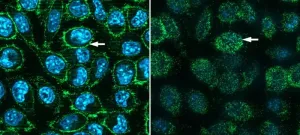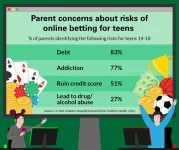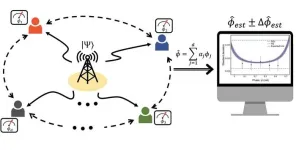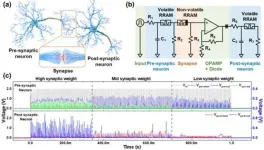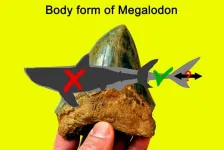(Press-News.org)
Photos
A new University of Michigan-led international study finds that fruits and vegetables grown in urban farms and gardens have a carbon footprint that is, on average, six times greater than conventionally grown produce.
However, a few city-grown crops equaled or outperformed conventional agriculture under certain conditions. Tomatoes grown in the soil of open-air urban plots had a lower carbon intensity than tomatoes grown in conventional greenhouses, while the emissions difference between conventional and urban agriculture vanished for air-freighted crops like asparagus.
"The exceptions revealed by our study suggest that urban agriculture practitioners can reduce their climate impacts by cultivating crops that are typically greenhouse-grown or air-freighted, in addition to making changes in site design and management," said study co-lead author Jason Hawes, a doctoral student at U-M's School for Environment and Sustainability.
"Urban agriculture offers a variety of social, nutritional and place-based environmental benefits, which make it an appealing feature of future sustainable cities. This work shines light on ways to ensure that urban agriculture benefits the climate, as well as the people and places it serves."
Urban agriculture, the practice of farming within the confines of a city, is becoming increasingly popular worldwide and is touted as a way to make cities and urban food systems more sustainable. By some estimates, between 20% and 30% of the global urban population engages in some form of urban agriculture.
Despite strong evidence of the social and nutritional benefits of urban agriculture, its carbon footprint remains understudied. Most previously published studies have focused on high-tech, energy-intensive forms of UA—such as vertical farms and rooftop greenhouses—even though the vast majority of urban farms are decidedly low-tech: crops grown in soil on open-air plots.
The new U-M-led study, scheduled for publication Jan. 22 in the journal Nature Cities,
aimed to fill some of the knowledge gaps by comparing the carbon footprints of food produced at low-tech urban agriculture sites to conventional crops. It used data from 73 urban farms and gardens in five countries and is the largest published study to compare the carbon footprints of urban and conventional agriculture.
Three types of urban agriculture sites were analyzed: urban farms (professionally managed and focused on food production), individual gardens (small plots managed by single gardeners) and collective gardens (communal spaces managed by groups of gardeners).
For each site, the researchers calculated the climate-altering greenhouse gas emissions associated with on-farm materials and activities over the lifetime of the farm. The emissions, expressed in kilograms of carbon dioxide equivalents per serving of food, were then compared to foods raised by conventional methods.
On average, food produced through urban agriculture emitted 0.42 kilograms of carbon dioxide equivalents per serving, six times higher than the 0.07 kg CO2e per serving of conventionally grown produce.
"By assessing actual inputs and outputs on urban agriculture sites, we were able to assign climate change impacts to each serving of produce," said study co-lead author Benjamin Goldstein, assistant professor at U-M's School for Environment and Sustainability. "This dataset reveals that urban agriculture has higher carbon emissions per serving of fruit or vegetable than conventional agriculture—with a few exceptions."
Joshua Newell, professor and co-director of the Center for Sustainable Systems at SEAS, led the University of Michigan portion of the project. The U-M researchers formed an international team of collaborators from universities near the various food-growing sites. Ten of those collaborators are co-authors of the Nature Cities study.
Farmers and gardeners at urban agriculture sites in France, Germany, Poland, the United Kingdom and the United States were recruited as citizen scientists and used daily diary entries to record inputs and harvests from their food-growing sites throughout the 2019 season.
Inputs to the urban agriculture sites fell into three main categories: infrastructure (such as the raised beds in which food is grown, or pathways between plots), supplies (including compost, fertilizer, weed-blocking fabric and gasoline for machinery), and irrigation water.
"Most of the climate impacts at urban farms are driven by the materials used to construct them—the infrastructure," Goldstein said. "These farms typically only operate for a few years or a decade, so the greenhouse gases used to produce those materials are not used effectively. Conventional agriculture, on the other hand, is very efficient and hard to compete with."
For example, conventional farms often grow a single crop with the help of pesticides and fertilizers, resulting in larger harvests and a reduced carbon footprint when compared to urban farms, he said.
The researchers identified three best practices crucial to making low-tech urban agriculture more carbon-competitive with conventional agriculture:
Extend infrastructure lifetimes. Extend the lifetime of UA materials and structures such as raised beds, composting infrastructure and sheds. A raised bed used for five years will have approximately four times the environmental impact, per serving of food, as a raised bed used for 20 years.
Use urban wastes as UA inputs. Conserve carbon by engaging in "urban symbiosis," which includes giving a second life to used materials, such as construction debris and demolition waste, that are unsuitable for new construction but potentially useful for UA. The most well-known symbiotic relationship between cities and UA is composting. The category also includes using rainwater and recycled grey water for irrigation.
Generate high levels of social benefits. In a survey conducted for the study, UA farmers and gardeners overwhelmingly reported improved mental health, diet and social networks. While increasing these "nonfood outputs" of UA does not reduce its carbon footprint, "growing spaces which maximize social benefits can outcompete conventional agriculture when UA benefits are considered holistically," according to the study authors.
Co-authors of the Nature Cities paper are from McGill University in Canada, University Paris-Saclay and the Agroecology and Environmental Research Unit in France, the University of Kent in the United Kingdom, ILS Research in Germany, City University of New York and Adam Mickiewicz University in Poland.
Support for the project was provided by the UK Economic and Social Research Council, German Federal Ministry of Education and Research, French National Research Agency, U.S. National Science Foundation, Poland's National Science Centre, and the European Union's Horizon 202 research and innovation program.
Study (available once embargo lifts): Comparing the carbon footprints of urban and conventional agriculture (DOI 10.1038/s44284-023-00023-3)
END
Food from urban agriculture has carbon footprint 6 times larger than conventional produce, study shows
2024-01-22
ELSE PRESS RELEASES FROM THIS DATE:
Scientists make COVID receptor protein in mouse cells
2024-01-22
UPTON, NY—A team of scientists at the U.S. Department of Energy’s (DOE) Brookhaven National Laboratory and Columbia University has demonstrated a way to produce large quantities of the receptor that SARS-CoV-2, the virus that causes COVID-19, binds to on the surface of human cells. That binding between the now-infamous viral spike protein and the human “ACE2” receptor is the first step of infection by the virus. Making functional human ACE2 protein in mouse cells gives scientists a new way to study these receptors and potentially put them to use. In addition, as described in a paper just published in the journal Virology, the ...
Researchers unveil new way to counter mobile phone ‘account takeover’ attacks
2024-01-22
Computer science researchers have developed a new way to identify security weaknesses that leave people vulnerable to account takeover attacks, where a hacker gains unauthorized access to online accounts.
Most mobiles are now home to a complex ecosystem of interconnected operating software and Apps, and as the connections between online services has increased, so have the possibilities for hackers to exploit the security weaknesses, often with disastrous consequences for their owner.
Dr Luca Arnaboldi, from the University of Birmingham’s School of Computer Science, explains: “The ruse of looking over someone’s shoulder to find out their PIN is well known. ...
What factors affect patients’ decisions regarding active surveillance for low-risk prostate cancer?
2024-01-22
Because low-risk prostate cancer is unlikely to spread or impact survival, experts and guidelines recommend active surveillance, which involves regular monitoring and thus avoid or delay treatment like surgery or radiation therapy and their life-changing complications. A new study examined the rates of active surveillance use and evaluated the factors associated with selecting this management strategy over surgery or radiation, with a focus on underserved Black patients who have been underrepresented in prior studies. The findings are published by Wiley online in CANCER, a peer-reviewed journal of the American Cancer Society.
For the study, called the Treatment ...
New sustainable method for creating organic semiconductors
2024-01-22
Researchers at Linköping University, Sweden, have developed a new, more environmentally friendly way to create conductive inks for use in organic electronics such as solar cells, artificial neurons, and soft sensors. The findings, published in the journal Nature Communications, pave the way for future sustainable technology.
Organic electronics are on the rise as a complement and, in some cases, a replacement to traditional silicon-based electronics. Thanks to simple manufacturing, high flexibility, and low weight combined with the electrical properties typically associated with traditional semiconductors, it can be useful for applications such as digital displays, energy storage, ...
Digital dice and youth: 1 in 6 parents say they probably wouldn’t know if teens were betting online
2024-01-22
As young people increasingly have access and exposure to online gambling, only one in four parents say they have talked to their teen about some aspect of virtual betting, a national poll suggests.
But over half of parents aren’t aware of their state’s legal age for online gambling and one in six admit they probably wouldn’t know if their child was betting online, according to the University of Michigan Health C.S. Mott Children’s Hospital National Poll on Children’s Health.
“Teens and young adults may have a difficult time going ...
Enable distributed quantum sensors for simultaneous measurements in distant places
2024-01-22
We've all had the experience of trying to get the exact time of a highly competitive concert ticket or class beforehand. If the time in Seoul and Busan is off by even a fraction of an hour, one will be less successful than the other. Sharing the exact time between distant locations is becoming increasingly important in all areas of our lives, including finance, telecommunications, security, and other fields that require improved accuracy and precision in sending and receiving data.
The Korea Institute of Science and Technology (KIST) announced that Dr. Hyang-Tag Lim and his team at the Center ...
Implement artificial neural network hardware systems by stacking them like "neuron-synapse-neuron" structural blocks
2024-01-22
With the emergence of new industries such as artificial intelligence, the Internet of Things, and machine learning, the world's leading companies are focusing on developing next-generation artificial intelligence semiconductors that can process vast amounts of data while consuming energy efficiently. Neuromorphic computing, inspired by the human brain, is one of them. As a result, devices that mimic biological neurons and synapses are being developed one after another based on emerging materials and structures, but research on integrating individual devices into a system to verify and optimize them ...
The megalodon was less mega than previously believed
2024-01-22
A new study shows the Megalodon, a gigantic shark that went extinct 3.6 million years ago, was more slender than earlier studies suggested. This finding changes scientists’ understanding of Megalodon behavior, ancient ocean life, and why the sharks went extinct.
The Megalodon or megatooth shark is typically portrayed as a super-sized monster in popular culture, with recent examples in the sci-fi films “The Meg” (2018) and “Meg 2: The Trench” (2023). Previous studies assume that the shark likely reached lengths of at least 50 feet and possibly as much as 65 feet.
However, the Megalodon is largely known only from its teeth and vertebrae in the ...
Slender shark: Study finds Megalodon was not like a gigantic great white shark
2024-01-22
CHICAGO — A new scientific study shows that the prehistoric gigantic shark, Megalodon or megatooth shark, which lived roughly 15-3.6 million years ago nearly worldwide, was a more slender shark than previous studies have suggested.
Formally called Otodus megalodon, it is typically portrayed as a super-sized, monstrous shark in novels and sci-fi films, including “The Meg.” Previous studies suggest the shark likely reached lengths of at least 50 to 65 feet (15 to 20 meters). However, ...
New criteria for sepsis in children based on organ dysfunction
2024-01-21
Clinician-scientists from Ann & Robert H. Lurie Children’s Hospital of Chicago were among a diverse, international group of experts tasked by the Society of Critical Care Medicine (SCCM) with developing and validating new data-based criteria for sepsis in children. Sepsis is a major public heath burden, claiming the lives of over 3.3 million children worldwide every year. The new pediatric sepsis criteria – called the Phoenix criteria – follow the paradigm shift in the recent adult criteria that define sepsis as severe ...
